- Administrator
- Albums and Singles
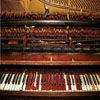 Taking a step away from his singer-songwriter dabblings and harsher noise outputs of Burning Star Core, Yeh's 1975 is a piece of sound art that occasionally flirts with musical elements, but prefers to stay in the realm of abstraction, with a healthy sense of humor to boot. While it might not feel like an album in the traditional sense, the pieces that make up this disc still come together strongly, making for a whole greater than the sum of its parts.
Taking a step away from his singer-songwriter dabblings and harsher noise outputs of Burning Star Core, Yeh's 1975 is a piece of sound art that occasionally flirts with musical elements, but prefers to stay in the realm of abstraction, with a healthy sense of humor to boot. While it might not feel like an album in the traditional sense, the pieces that make up this disc still come together strongly, making for a whole greater than the sum of its parts.
The first half is a series of alternating pieces of droning tones and processed voice, none of which is easily identifiable as far as source material goes:it could be violin, it could be feedback in regard to the drone tracks, who knows.The opening "Drone" is comprised of complex intertwined tones, rising and falling with one another delicately, but forcefully.In its latter moments it becomes more spacious, which sets the stage for the subsequent two drone works.
The second of the drones has a lighter, floating sensibility to it, with the chiming swells being less oppressive than the ones in the preceding track.The third and final drone piece continues this theme, bringing in a drifting variety of tones that never become too overwhelming, ending on an especially somber note.For an artist that often trades in harsh blasts and ugly noise, there is a heavily level of restraint and care put into these works.
Between these are two pieces of voice composition, both made up of cut-up fragments treated with a digital sheen.Besides the fact that the vocals are sliced into microscopic fragments that belie their humanity, there is a hollow, 8 bit digital sample quality that renders them even more synthetic.The second piece sounds comparably more abstract, with the voice snippets both presented in pure scatter-shot chaos, and other times allowed to lock into some sort of monstrous rhythmic structureWhile I enjoy the drone works, here is where Yeh's skills shine.His use of something so simple and omnipresent, the human voice, may not be entirely unique, but his ability in structuring and treating the results is what sets it apart from other similar works.
On the second half of the disc, the two part "Two Guitars," sounds distinctly like one guitar is effected/treated to generate shrill, sustained tones while the other left to be a more textural element.The first piece emphasizes the shrill, often uncomfortable tones, while the latter focuses on the staticy, textured guitar layer.Like his work with just voice, this self-imposed restriction lets Yeh do what he does best:creating a complex composition from a relatively small sonic palette.
The final two pieces do not seem to be built around any specific theme, but stand together strongly on their own to close the disc."Au Revoir…" sounds like a collage of thin, digitally processed synth samples that are occasionally mixed up with booming industrial blasts and wet, messy analog synth outbursts."…Et Bonne Nuit" has the same primary components, but takes on a more deliberate rhythmic structure in comparison, with both pieces ending with the untreated sounds of piano.These pieces feel less limited as far as their source material goes, but even without those self-defined boundaries, the result is a dynamic set of pieces that never get too ambient as to be ignorable, but never go for the jugular with distortion either.
Interspersed in the album are two "skits" that add a distinct levity to a genre that’s usually far too stoic and serious.While "Drips" is simply dripping water, "Shrinkwrap From A Solo Saxophone CD" is just that:rattling plastic wrap captured via microphone.It's untreated and uneffected, and from the title it's obvious what it is, but without that clue, it could be any piece of abstract electronic sound. Compared to his more noise-centric outburst and his last single of actual "music," 1975 is a more abstract and stripped-down work, but one that still clearly shows Yeh's ability to manipulate sound into unique and idiosyncratic shapes.The combination of working quite creatively with limited source material, as well as not taking himself too seriously, makes for a piece of sound art that is compelling without being too sterile or academic.I'm hesitant to call it a "fun" album, but speaking in relative terms, it kind of is.
samples:
 
Read More
- Administrator
- Albums and Singles
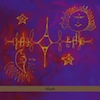 It has been a few years since Terry Riley has released an album with any meat to it. This double CD represents the first major recorded work Riley has done in a long time and it is a sprawling and intense journey. However, it is far from a return to form and a number of flaws get in the way of this being listed alongside his classic works.
It has been a few years since Terry Riley has released an album with any meat to it. This double CD represents the first major recorded work Riley has done in a long time and it is a sprawling and intense journey. However, it is far from a return to form and a number of flaws get in the way of this being listed alongside his classic works.
One of Riley’s hallmarks has been his accessibility but Aleph is a cantankerous beast. Performed on a Korg Triton Studio 88 keyboard in just intonation, I was expecting something along the lines of his organ works from the 60s or perhaps an electric version of the gorgeous just intonation piano works found on The Harp of New Albion. Instead, Riley creates a dense fog of improvised keyboard that is difficult to penetrate.
The name of the piece, Aleph, represents a beginning and bringing together concepts from Judaism, mathematics and even connects to the alap of a raga (something close to Riley’s heart). This heady mix of connotations is represented in Riley’s music with its suggestions of infinity and almost religious tenacity of his playing. The first disc in particular howls and skronks along to the point where I feel the need to stop it. It is hard work, especially so due to the settings on the Korg that he is using. Somewhere between a saxophone and one of those cheap toy Casios we all had as children, it grates on the ear more often than not. Towards the end of the first disc, Riley sounds like a traffic jam as the different notes sound like angry blasts of car horns rather than the hypnotic cycles that I would normally associate with his work.
The second disc fares better as Riley settles more into a more comfortable mode. The timbre is still an issue but he utilizes the sounds better than earlier in the work. He allows the notes to breathe and the just intonation scale becomes more apparent. Towards the end of the piece, his almost random playing suddenly morphs into a boogie-woogie rhythm and it feels like all the blood, sweat and tears of the previous hour has resolved into something not only familiar but actually pleasant to listen to.
As much as I look forward to new works by Riley, Aleph is marred by that awful synthesizer sound. I cannot help but feel that if Riley had performed this on the piano or even with a less grating setting on his Korg then it would be an awful lot better. Even a shorter edit of the performance would be preferable as the first part is a slog to get through. As it stands, Aleph is more of a curio than a canon release.
samples:
 
Read More
- Administrator
- Albums and Singles
 In a move that can only be described as "classic Heemann," Plastic Palace People 2 exhumes and recombines recordings from a 20-year-old collaboration.  These aren't just unheard remnants from the vault though: a lengthy and very recognizable segment of Mimyriad is reprised.  In fact, this can easily be viewed as a third version of that album–while most members of Mimir are not represented, their absence is not especially noticeable (given the nature of the music) and the two albums follow a similarly drifting, abstract, and long-form structure.  I think this incarnation definitely improves on the previous ones in most ways, but the whole endeavor is still as puzzling as it is revelatory.
In a move that can only be described as "classic Heemann," Plastic Palace People 2 exhumes and recombines recordings from a 20-year-old collaboration.  These aren't just unheard remnants from the vault though: a lengthy and very recognizable segment of Mimyriad is reprised.  In fact, this can easily be viewed as a third version of that album–while most members of Mimir are not represented, their absence is not especially noticeable (given the nature of the music) and the two albums follow a similarly drifting, abstract, and long-form structure.  I think this incarnation definitely improves on the previous ones in most ways, but the whole endeavor is still as puzzling as it is revelatory.
Unsurprisingly, all of these recordings were purportedly taken from 1992, a period when Mimir was working on Mimyriad with new member Jim O'Rourke. In most cases, cannibalizing a previous album  and excising the contributions of some members would be an extremely dubious and ethically questionable thing to do, but Mimir was essentially a playground for Heemann to rip apart, warp, and reconfigure the contributions of others: he's more of a restless, eternally dissatisfied audio mosaicist than a Mimir revisionist in this case.  I'm not sure how much raw material is reappearing here, given Heemann's talent (and zeal) for processing and recontextualizing, but it is very hard to miss the lengthy xylophone, bongo, and mournful horn motif that was arguably Mimyriad's centerpiece.  Also, the length and structure are nearly identical: Plastic Palace People 2 is a single 18-minute piece that slowly drifts from theme to theme with long quiet stretches and dreamlike (il)logic.
I am fairly sure that O'Rourke was fully in "musique concrète composer" mode at the time of these sessions, as there is no recognizable guitar present.  As a result, this is a significantly more abstract affair than it was when Andreas Martin and The Legendary Pink Dots were involved.  On one hand, I am happy that there is nothing resembling a cheery quasi-krautrock jam here, but I miss Martin's acoustic guitar.  Instead, there is strong emphasis on ghostly, subtly dissonant drones, which I am quite pleased with.  Unfortunately, I am less pleased with the seemingly fragmented structure and occasional long stretches of field recordings.  While Heemann often processes and tweaks them inventively, my attention definitely starts to wane a bit whenever I am subjected to construction workers hammering, street noise, a subway, trickling water, or someone flipping through the pages of a book.  This is partly my fault though, as the deep, submerged-sounding undercurrent that contextualizes and colors these passages demands more focused and intent listening than I am usually able to invest.  This might actually be an album that should be exclusively listened to on headphones, as nuanced, slow-building intensity seems a hell of a lot like "not much is happening " under normal listening conditions (and parts that seem like silence actually aren't).
The main justification for Plastic Palace People 2's existence is the end.  Mimyriad closed with a jangly, anticlimactic psych-rock jam, while this album surges to a heavy, grinding drone crescendo.  As a result, it feels like a much more coherent and dynamically satisfying piece.  The catch is simply that it requires a lot of time and attention to appreciate that–this is unapologetically challenging music (though much less so than H.N.A.S., thankfully).  Naturally, I am fine with that, but it certainly took some effort on my part to fully warm to this and appreciate the evolution and artistry involved.  While I would be much more enthusiastic about an entirely new Heemann album than I am about yet another variation on my least favorite Mimir effort, I have to concede that the sessions were worth revisiting and that he has probably finally sculpted the definitive album from them (at least for now, anyway).
Samples:
 
Read More
- Administrator
- Albums and Singles
 This is the first of two collaborative albums between Jim O’Rourke and Christoph Heemann and represents some stunning spaced-out collage work by both artists. While it lacks the variance of Vol. 2, this particular work is a master class in using a very limited palette of sounds to create a massive emotional impact. The duo are almost painterly in their craft, shading and blending the different tones into each other rather than allowing any discrete patterns to emerge.
This is the first of two collaborative albums between Jim O’Rourke and Christoph Heemann and represents some stunning spaced-out collage work by both artists. While it lacks the variance of Vol. 2, this particular work is a master class in using a very limited palette of sounds to create a massive emotional impact. The duo are almost painterly in their craft, shading and blending the different tones into each other rather than allowing any discrete patterns to emerge.
 
Divided into three sections, O’Rourke and Heemann cover a lot of ground as the duo test each other’s limits. The first piece starts from almost nothing, slowly developing into a thick, beautiful drone inlaid with bubbling textures and what sounds like an accordion being beaten to death. Listening to it on headphones, the level of detail in the various layers of sound is astounding. The piece eventually dissipates into something that veers between a murky electronic thrum and human voices being fed through a star; it certainly feels like Heemann is more in control at this point.
The second piece opens with what appears to be an Ebow drone, giving the impression that things are now in O’Rourke’s court. Feral animal sounds begin to eminate from the darkness as an oppressive throbbing noise becomes more and more perceptible. This mix between machine-like and predatory sounds is like a waking nightmare, turning the enveloping and comforting emotions of the first piece on its head.
The final piece returns to the gentle approach of the album’s beginning. Drifting tones sleepily cross the room, lulling me gently towards a state of relaxation. Granted, my relaxed state is somewhat perturbed by the return of the accordion; this time not being beaten to death but still rather discordant. It is a mood-killer for sure but it suits the piece perfectly.
What is most surprising about Plastic Palace People is that these recordings go back 20 years and represent an overview of the work O’Rourke and Heemann have been doing together over all that time (from the information given, this work appears to pre-date O’Rourke’s stint with Mimir). It sounds utterly modern and exactly like what I would expect from a brand new recording from the two of them. Although, given that Heemann often returns to sound sources and completely reassembles and reprocesses them into new forms, it is probably not that much of a surprise.
samples:
 
Read More
- Administrator
- Albums and Singles
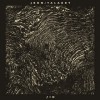 Maximalism is in vogue for electronic musicians right now. With the rise of commercialized dubstep (aka "brostep"), this trend is unlikely to be reversed in 2012. Luckily, John Talabot is making fantastically balanced, listenable dance music a bit left of center; his debut album, ƒIN, downplays the genre's current above-ground trends in favor of his own nuanced production.
Maximalism is in vogue for electronic musicians right now. With the rise of commercialized dubstep (aka "brostep"), this trend is unlikely to be reversed in 2012. Luckily, John Talabot is making fantastically balanced, listenable dance music a bit left of center; his debut album, ƒIN, downplays the genre's current above-ground trends in favor of his own nuanced production.
As near as I can tell, Daft Punk's hyperbolic live shows in 2007 were a zeitgeist-defining moment, setting the tone for five years of dance music both rewarding (Flying Lotus and the Brainfeeder scene, Underworld's slept-on Barking, Orbital's return to the stage) and laughably overwrought (Justice, Deadmau5, Skrillex, et al.). Dance music is, by its very nature, a track-oriented scene, with songs sculpted for maximum impact in three or four minutes within a club setting, where hard-hitting structures make perfect sense. For those who prefer digesting their music at home, on headphones instead of in between sweaty, thrashing bodies, electronic music that fires on all cylinders can wear out its welcome quickly.
To that end, Barcelona-based musician John Talabot has crafted a full-length debut that strikes an elegant, elusive balance between danceable energy and relaxed home listening. Talabot has been producing remixes for a few years now, deconstructing well-known songs by the xx, Delorean, Glasser, Shit Robot, Teengirl Fantasy, and others. His first album under this pseudonym, ƒIN—French for "the end"—has already raised his profile a good bit in dance music circles. The good news is that ƒIN lives up to the hype: it's a stunning piece of work, elegantly composed, tailored for repeat plays, and the best electronic album I've yet heard this year. Talabot's ear for stacking simple melodies on top of one another like Legos, building emotional impact with precision, was pioneered by acts like Orbital in the '90s. I can't recall the last time I've heard the concept executed this sharply.
Lead track "Depak Ine" doesn’t immediately charge out of the gate; rather, it's a seven-minute slow-burner that incorporates nature samples—check the frogs croaking in place of the would-be "chorus"—and enough atmosphere to make Christoph Heemann jealous. (Well, maybe not quite.) While not aggressive, the tempo and rhythm are significant enough for "Depak Ine" to revitalize any 3:00 AM dance-floor. Pional's echoed vocals on the next track, "Destiny," recall Noah Lennox's reverbed chants on Merriweather Post Pavilion and Tomboy, minus the all-colors-bleeding production that sank Merriweather's replayability faster than the Titanic.
As ƒIN progresses, Talabot shows his versatility. "Journeys" incorporates a sun-kissed, summery vibe, layering guest vocals from Delorean frontman Ekhi Lopetegi atop a Caribbean melody. The chopped-up vocals and synths on "Last Land" shoot the album's upbeat nature into the clouds; the track pauses for a breath midway through, only to return with a heartstring-tugging key change set against the primary melody. "When the Past Was Present" is the album's secret weapon, with a groove reminiscent of New Order's flawless run of singles on Substance; halfway through, a laser-beam note of distorted, echoed guitar cuts through the din (think "True Faith") and takes the song's emotional impact to the next level.
It's hard to find fault with ƒIN. If anything, though, several of these tracks could stand to be lengthened. Only two cross the five-minute mark—the opening and closing tracks, naturally—as ƒIN is clearly tailored to our iPod Shuffle ADHD generation. At a meager three minutes, "El Oeste" winds down a whole lot quicker than it should; its locked-groove rhythm is the most hypnotic thing on the album by a mile, so when it ends abruptly, its impact is somewhat lessened. Likewise, "Estiu" builds tension as effectively as possible in three minutes, but ultimately has its hands tied by its quick ending. If Talabot would have doubled the length of a few of these tracks, I think the album would be improved—if just barely.
Many of my favorite electronic artists aren't afraid to stretch out their songs, playing to their strengths ad infinitum, from Tangerine Dream's hot streak in the early '70s to Orbital's sprawling masterpiece In Sides. Let's hope Talabot does the same going forward; several of the songs on ƒIN are begging for such treatment. Closing track "So Will Be Now..." magnifies the preceding tracks' thirst for running time; it tops out at seven minutes with not a second wasted, weaving a rubbery bass line and soulful vocal samples into a hypnotic web of prog-house, closing ƒIN on its high water mark. Despite its occasional self-imposed restrictions with regard to song length, ƒIN gets my vote for the best electronic album of 2012 to date.
Samples:
Read More
- Administrator
- Albums and Singles
 Time of the metronomic kind gives shape to music. It defines the tempo of a song, fixes when sounds should and shouldn’t be played, and determines mood as surely as major and minor keys do. On 2 Seconds/B minor/Wave, Michael Pisaro and Taku Sugimoto reverse that relationship and employ sound to illuminate the physical shapes and vaulted spaces of time. The product of independent performances, this album comes together in an astonishingly cohesive way, meaning that besides being a perspective-bending and aleatoric success, it is also a beautiful 60 minutes of music. Listen closely or let it pass over you, either way it furnishes many rewards.
Time of the metronomic kind gives shape to music. It defines the tempo of a song, fixes when sounds should and shouldn’t be played, and determines mood as surely as major and minor keys do. On 2 Seconds/B minor/Wave, Michael Pisaro and Taku Sugimoto reverse that relationship and employ sound to illuminate the physical shapes and vaulted spaces of time. The product of independent performances, this album comes together in an astonishingly cohesive way, meaning that besides being a perspective-bending and aleatoric success, it is also a beautiful 60 minutes of music. Listen closely or let it pass over you, either way it furnishes many rewards.
Pisaro and Sugimoto pull back the curtains on their first collaborative record with the pellucid ring of a sine wave and the clink of some unidentifiable objects. This sound reaches into the room and drifts like smoke into the corners, where it finally resonates and settles like a thought. And then the next glassy wave of sound rolls out behind it and the show has begun. What follows are three pieces that were recorded separately, in Japan and California, and combined afterward. Beyond agreeing to record without hearing each other, Pisaro and Sugimoto came up with some basic rules to help guide their performances. They decided that each song would last exactly twenty minutes, and that each would be shaped by a simple concept, which each title explains very well. "2 Seconds" indicates a unit of measure or pulse from which to begin, "B Minor" dictates a key, in which Michael provides the melody and Taku the harmony, and "Wave" suggests just a wave, whatever that might mean to them as performers. All else was left up to chance, including which instruments were to be used.
The resulting pieces are quiet and surprisingly accessible, filled with melody, and punctuated by seamless bouts of motionlessness and silence. These silences aren’t so long or frequent that they dominate the music, but they do alter its sense. On "2 Seconds," with Taku regularly tapping objects together and sometimes utilizing what sounds like a power drill, Pisaro drops his tones into the near-silence the way someone might drop pebbles into a pond. Dropped one at a time, these tones bloom like a flower and give shape to the space and time into which they fall, in just the same way that a dropped pebble would send ripples across a pond’s surface. Because a sine tone’s shape and duration are wound together so inextricably, and because Pisaro and Taku’s performances work so well together, the music ends up giving a tangible shape to time. As Michael increases the complexity and sends more tones crossing and quivering into each other, the normal sense of time also increases in complexity, until it finally explodes. Minutes and seconds cease to be adequate indicators of its quality, and things like density, color, and emotion take their place. And listen closely, because even Taku’s seemingly regular contributions work to subdivide and mince time’s typical forward crawl.
"B Minor" is also a quiet and inward song, and thanks to the silences and the sense of space that infuse its melodic and harmonic phrases, it too feels like a song that is in control of time, rather than the other way around. But, its main attraction isn’t this feat, it’s the almost impossible sympathy that shows up in Michael and Taku’s playing that takes center stage. Their performances are so complementary that it’s hard to believe they were recorded in isolation. Pisaro and Sugimoto lace consonant harmonies with bouts of dissonance, half-bluesy progressions, and broken rhythms as if they were listening to (or maybe even watching) one another very closely. In places, the affinity is so strong that the music sounds composed. Of course, their restrained playing goes some way in explaining why two such performances might blend so well, but it doesn’t account for the almost impossible rapport they so obviously share.
The closer, "Wave," ventures into entirely different territory, with Pisaro providing field recordings of waves from the California coast and Sugimoto laying down a time-freezing drone. Here, the sympathy they built over the course of the album breaks down a little. Both their contributions sound like they could be standalone pieces, and besides the obvious conceptual connection, there isn’t much going on in the way of integration. Instead, there remains the still hum of Sugimoto’s drone and the surge of the ocean. Whether they contrast or not is left entirely, and appropriately, up to chance and whoever is listening. Once they both stop, the album ends and the curtains close, but that more robust sense of time sticks around for much longer, as does the beauty of the entire record.
samples:
 
Read More
- Administrator
- Albums and Singles
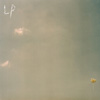 For his second solo effort, Deerhunter's Lockett Pundt abandons his experimental tendencies and throws himself wholeheartedly into making chiming, sun-dappled guitar pop.  On one hand, this album is much more focused, hook-filled, and filler-free than The Floodlight Collective.  On the other hand, he absolutely should not have done that, as he was much more compelling before.
For his second solo effort, Deerhunter's Lockett Pundt abandons his experimental tendencies and throws himself wholeheartedly into making chiming, sun-dappled guitar pop.  On one hand, this album is much more focused, hook-filled, and filler-free than The Floodlight Collective.  On the other hand, he absolutely should not have done that, as he was much more compelling before.
While this album is very different from its predecessor, it is easy to see where Lotus Plaza's change in direction originated: the best moments on Floodlight (like "Red Oak Way") tended to be the poppiest, most propulsive ones, so Spooky Action at a Distance attempts to replicate that success with every single song.  Unfortunately, there is a substantial problem with that logic, as Pundt is not a strong enough songwriter or emotive enough vocalist to quite make that work.  The Floodlight Collective's poppier moments worked only because his hazy, mumbled songs were propped up by some extremely cool textures, effects, and inventive ideas.  Spooky Action doesn't offer much in those regards at all, so the songs have to stand entirely on Lockett's melodies and beats.  Sometimes everything comes together pretty well, like the stomping, tambourine-heavy beat and strummed harmonics on "Out of Touch," but he more often misses the mark on at least one piece of the puzzle.  Lockett is simply not playing to his strengths here–he has definitely proven that he can do some very likable and unusual things when he is appropriately armed with effects pedals and processing techniques.  Choosing to play simple, fairly straightforward rock seems to be a pretty ill-advised move.
Sadly, there is also another fundamental issue here: even the album's good moments are homogenized into bland lifelessness by the production–the dynamics and character seem to have been squeezed out.  There is little bite, meat, or gravitas to this album at all, just endless vaguely pleasant, polite, detached-feeling sameness.  The low-end is probably the most lamentable casualty, but the problem is most acutely apparent when Pundt unleashes a rare flurry of dissonance–what should be attention-grabbing crescendos wind up being too smoothed-over and devoid of real presence to make much impact at all (though the howling riff in "White Galactic One" is a notable exception).  It's all very frustrating:  Pundt clearly worked very hard on his songwriting and came up with some appealing hooks and loads of nice ringing arpeggios, yet his efforts rarely amount to anything particularly substantial or distinctive.  I suppose this album arguably succeeds as some sort of summery, shoegaze-damaged indie rock road music, but it is too gutted and predictable to hold up to attentive, sustained listening.  While there are still admittedly a few pretty good songs here (like "Strangers" and "Black Buzz"), none of them come particularly close to reaching the highs of Lotus Plaza's debut.  This is a definite step backwards.
Samples:
 
Read More
 This is the first of two collaborative albums between Jim O'Rourke and Christoph Heemann and represents some stunning spaced-out collage work by both artists. While it lacks the variance of Vol. 2, this particular work is a master class in using a very limited palette of sounds to create a massive emotional impact. The duo are almost painterly in their craft, shading and blending the different tones into each other rather than allowing any discrete patterns to emerge.
This is the first of two collaborative albums between Jim O'Rourke and Christoph Heemann and represents some stunning spaced-out collage work by both artists. While it lacks the variance of Vol. 2, this particular work is a master class in using a very limited palette of sounds to create a massive emotional impact. The duo are almost painterly in their craft, shading and blending the different tones into each other rather than allowing any discrete patterns to emerge.
 This is the first of two collaborative albums between Jim O'Rourke and Christoph Heemann (the second instalment is also reviewed this week by Anthony D'Amico) and represents some stunning spaced-out collage work by the two artists. While it lacks the variance of Vol. 2, this particular work is a master class in using a very limited palette of sounds to create a massive emotional impact. The duo are almost painterly in their craft, shading and blending the different tones into each other rather than allowing any discrete patterns to emerge.
This is the first of two collaborative albums between Jim O'Rourke and Christoph Heemann (the second instalment is also reviewed this week by Anthony D'Amico) and represents some stunning spaced-out collage work by the two artists. While it lacks the variance of Vol. 2, this particular work is a master class in using a very limited palette of sounds to create a massive emotional impact. The duo are almost painterly in their craft, shading and blending the different tones into each other rather than allowing any discrete patterns to emerge.
- Administrator
- Albums and Singles
 The artists featured on this compilation aim to merge Costa Gröhn’s field recordings of a church and of a funfair to create a unique document representing Hamburg. The majority of the artists featured here struggle to create much worth listening to as they are limited by a poor selection of starting materials. It’s a nice idea but it doesn’t quite come together.
The artists featured on this compilation aim to merge Costa Gröhn’s field recordings of a church and of a funfair to create a unique document representing Hamburg. The majority of the artists featured here struggle to create much worth listening to as they are limited by a poor selection of starting materials. It’s a nice idea but it doesn’t quite come together.
As a concept, this album is great. Gröhn made a number of field recordings of Hamburg’s St. Michaelis church and the Hamburger DOM funfair. These raw recordings provided material for ten other artists to make new sound compositions with an aim to merge the sonic atmosphere of the two locations. Unfortunately the sleeve notes are mostly in German and my rudimentary skills in that language prevent me from learning the finer points behind the concept.
As a collection of field recordings and music, this album isn’t all that interesting. Gröhn’s original field recordings don’t provide much entertainment on their own: most of the short snippets do not allow for any insight to the environments nor do they work as stand alone pieces of sound. There are a couple from St. Michaelis that are very beautiful but they are both recordings of music as opposed to recordings of general atmosphere. The funfair tracks remind me that I don’t like going to funfairs so alas I’m biased against them from the start.
Many of the artists make a good stab at making something worthwhile out of these recordings but most of them fail to make much of them. The first eight pieces are quite dull. Hans Schüttler’s “Obnoxious” doesn’t quite live up to its title but it is lacklustre at best, the slight delay effect on the church recordings sounds like it was knocked up in about five minutes. The rest of the piece sees Schüttler crudely juxtaposing fairground announcements with choral work from church. This doesn’t work for me but perhaps there is something more to the piece that I’m missing because of my lack of German (as far as I can tell the fairground voice is prattling on about hell, I've a feeling it doesn't get much deeper than the simple contrast between this and the choir's hymns). Thankfully the last two reworkings of Gröhn’s recordings are a breath of fresh air. Christoph Korn’s “III. 5/04” is the spacious and pleasant sound of reverberations. This is followed by “Heiliggeist” by Lasse-Marc Riek which takes the pious beauty of the church and forms a wonderful piece that wouldn’t sound out of place as intro music at a Current 93 gig.
Imaginative use of found sounds is one thing I adore but I found Der Michel und Der Dom a let-down. This album is good for one or two listens but after that it is exhausted of most of its value: the couple good tracks don’t make up for the many mediocre ones. The concept works well on paper but not so much when transferred to the stereo.
samples:
- Hans Schüttler - Obnoxious
- Christoph Korn - III. 5/04
- Costa Gröhn - Feldaufnahmen von Michel und DOM 3
Read More
- Administrator
- Albums and Singles
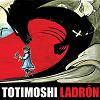 This album is a collection of songs that musically are on the listenable side of mediocre but are let down by poor vocals. It’s obvious they’re aspiring to being underground metal titans like the Melvins or High on Fire but they aren’t showing much promise. Ladrón is the sound of competent musicians capable of throwing together pretty good songs but lack the spark of excitement to set them apart from their peers.
This album is a collection of songs that musically are on the listenable side of mediocre but are let down by poor vocals. It’s obvious they’re aspiring to being underground metal titans like the Melvins or High on Fire but they aren’t showing much promise. Ladrón is the sound of competent musicians capable of throwing together pretty good songs but lack the spark of excitement to set them apart from their peers.
I was heavily disappointed with this album on my first listen, the band’s name and the Manga vibes from the cover made me think this was going to be another great rock band from Japan but I was fooled. The band hail from California and they sound like many of California’s early '90s alt-rock bands. This is probably in no small part due to Helmet’s Page Hamilton production. While I am a fan of Helmet, considering their recent return to the studio gave such discouraging results I would be wary that Hamilton may be past his creative prime. The unimaginative take on heavy-ish rock on display here confirms my worries; it sounds like they simply went into the studio and told the engineer that they wanted to sound like Seattle, 1990. Songs like “In Virgo” or “The Hide” could have been from the cutting room floor of any American guitar band from 15 years ago.
The music isn’t bad; but too derivative for my tastes. Totimoshi aren’t as heavy as they like to think (at least not in the studio) but they are at least a change from the two beat per minute sludge and doom bands that have spread like wildfire over the last few years. There are a couple of tasteful, simple guitar licks dotted throughout the album (like the opening to “Viva Zapata”) and the riffs are straightforward and uncomplicated. I can at least appreciate them for the way they’re put together.
Antonio Aguilar can play guitar but his style of singing is awful. He sounds like someone with a good voice but trying far too hard to be distinctive. He tries to sound pained and menacing but it ends up sounds cartoonish. If he wasn’t as rough sounding I would probably stick this album on more often than I will. On “These Meanings” he doesn’t try to sound like snarling rock star and while his voice is quite pleasant, it’s a shame that this is the only track that he does this.
Ladrón is not a terrible album but it suffers from the fact that the music, although proficiently played, isn’t that interesting and the parts that are worth listening to tend to be obscured by singing that doesn’t fit with it. This could have been an album with the potential for mass appeal as it is very radio friendly but unfortunately it is too uninspired to stand above the crowd.
samples:
Read More


